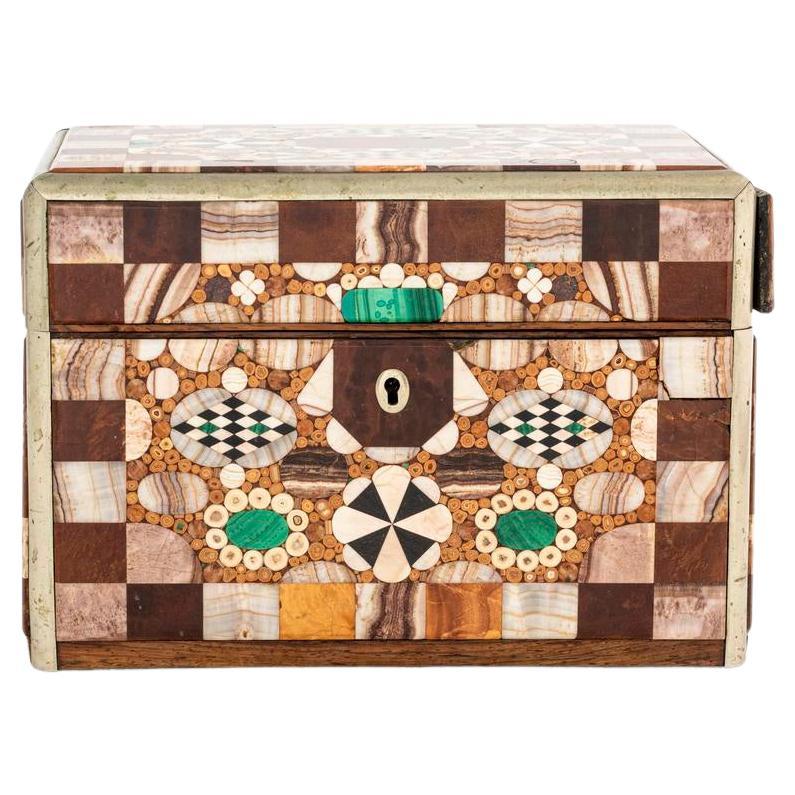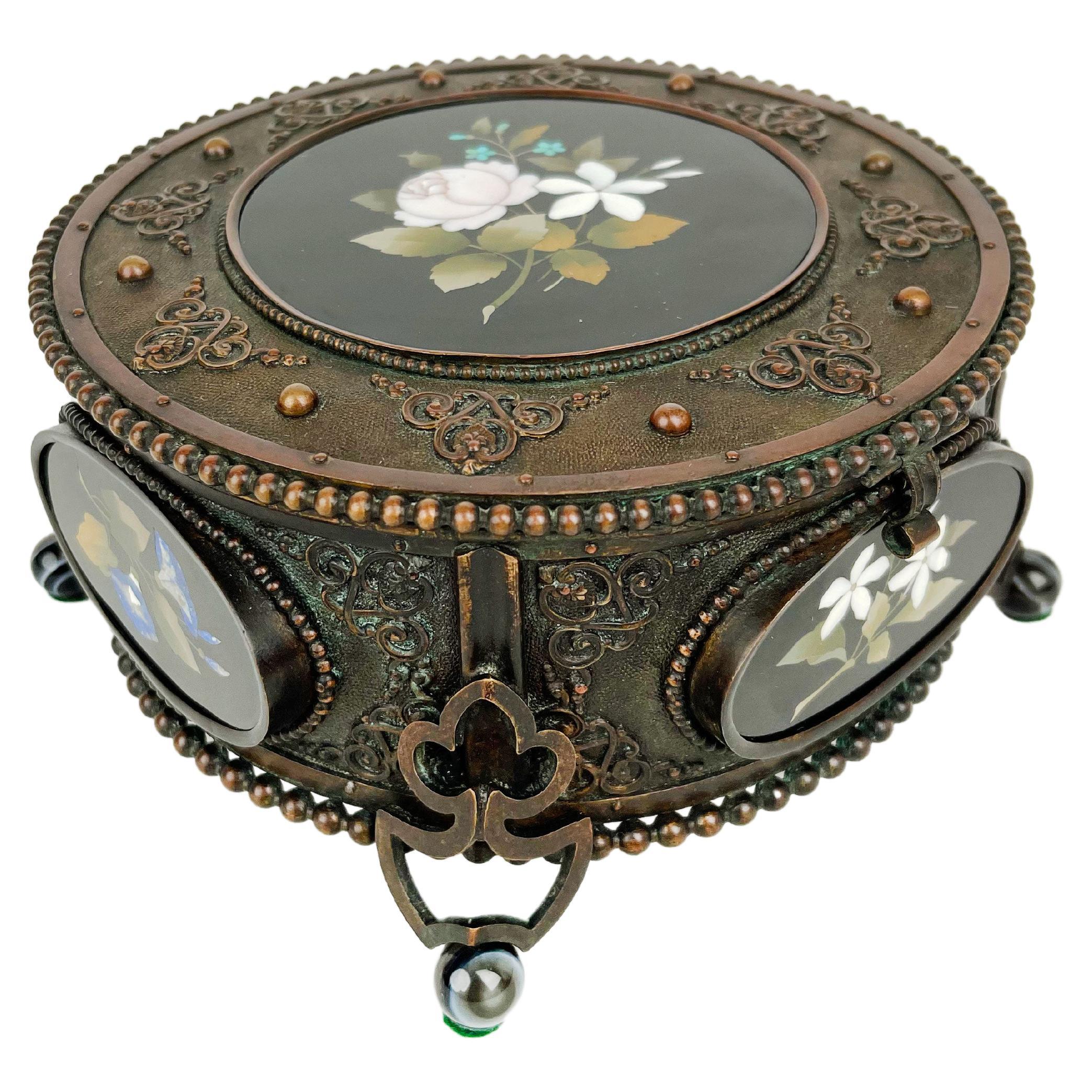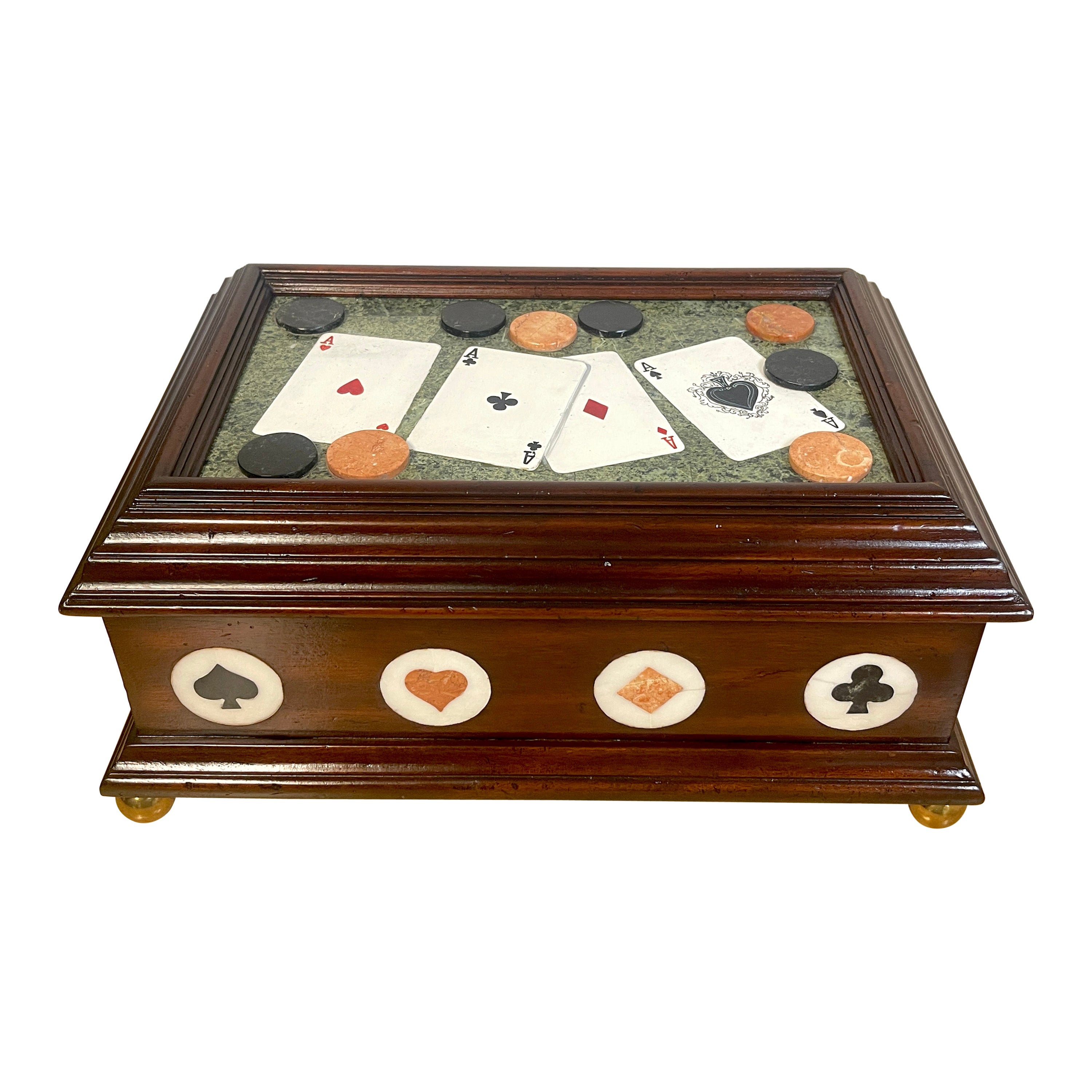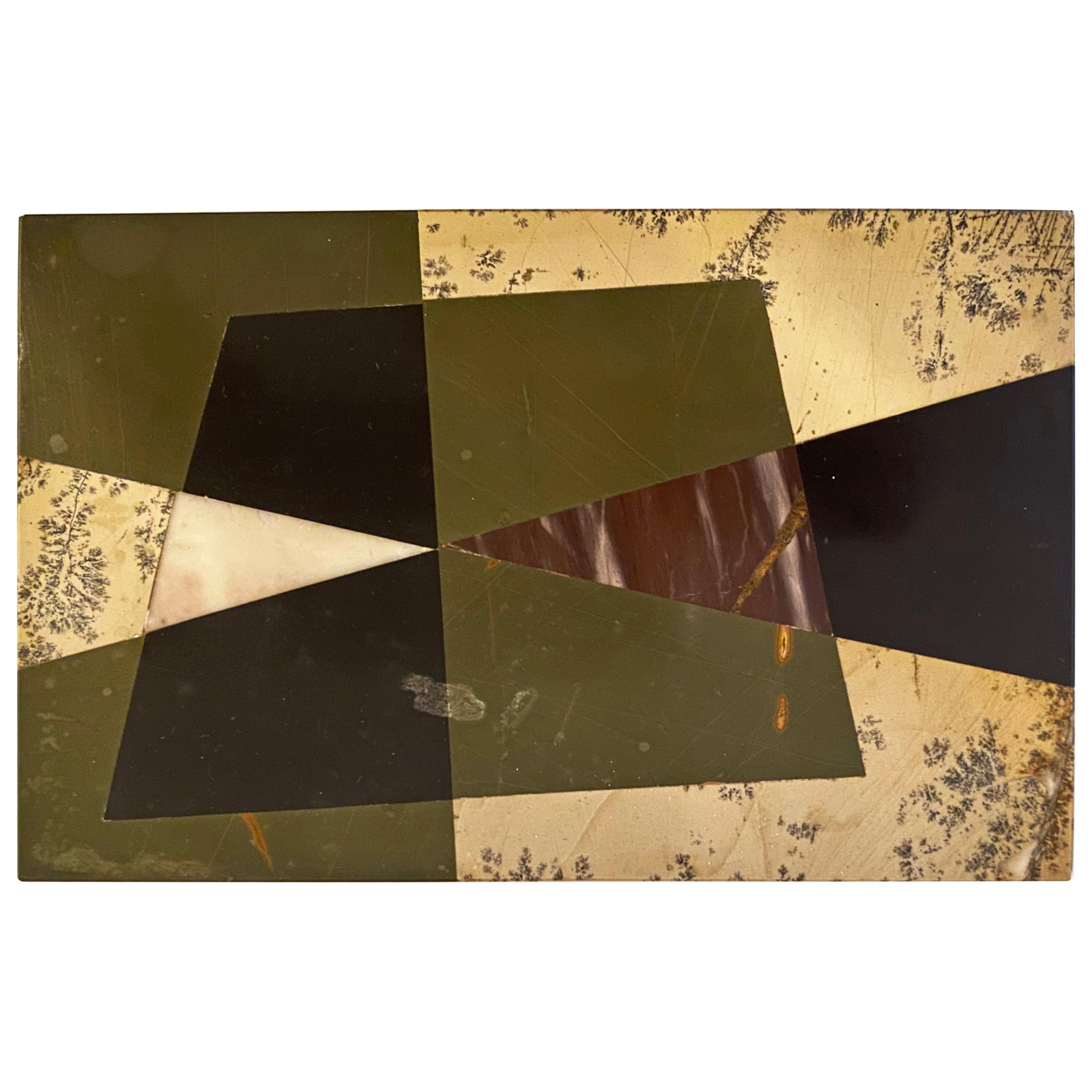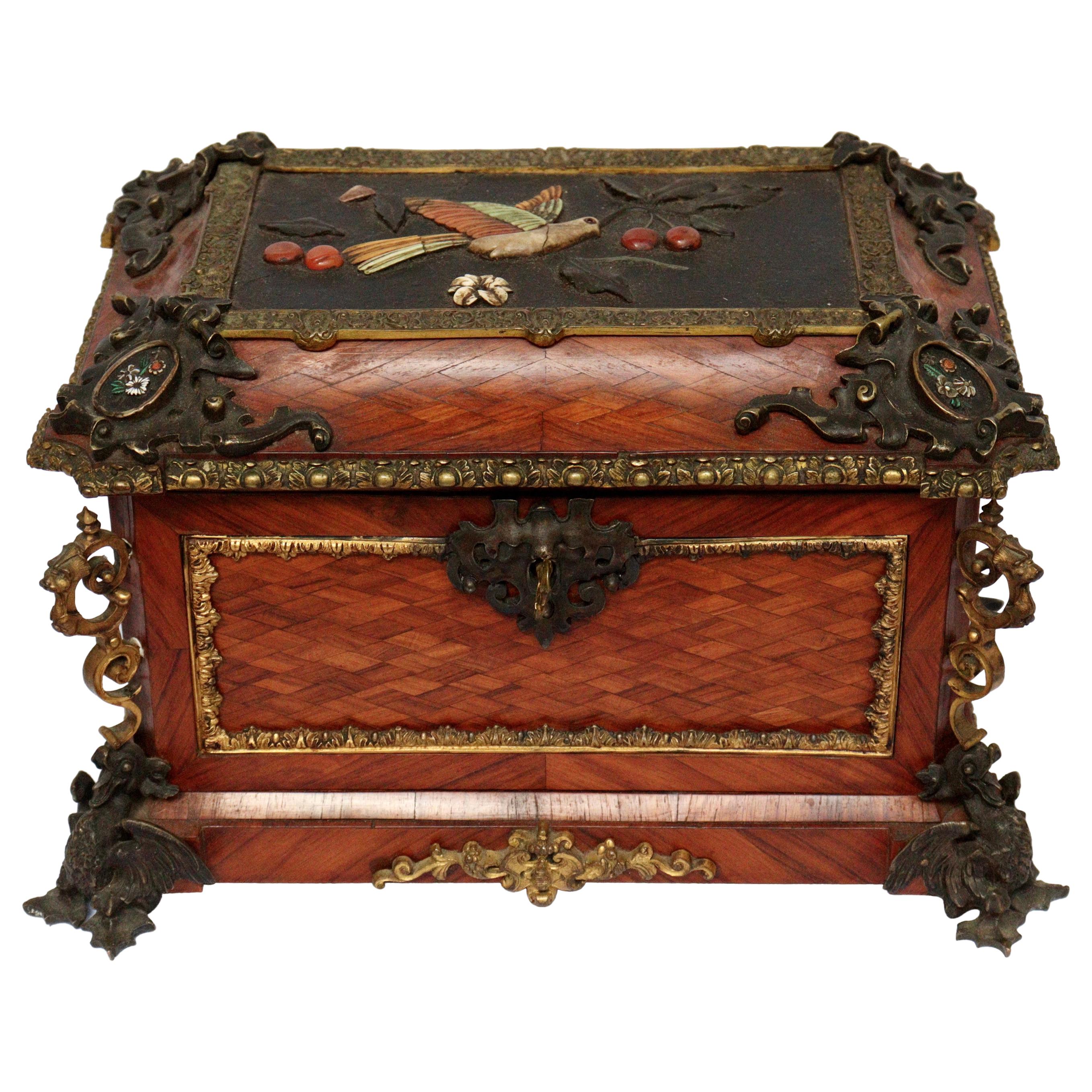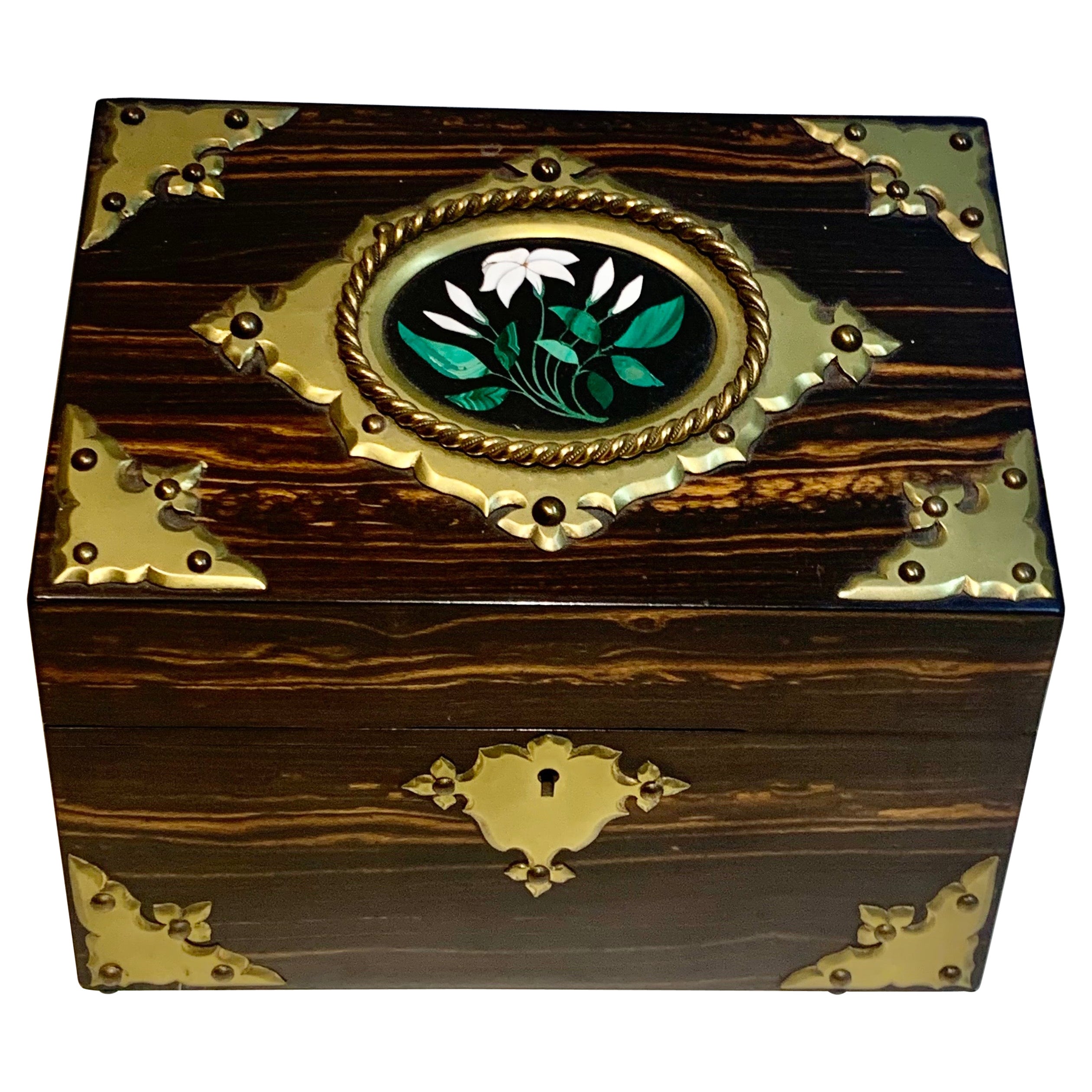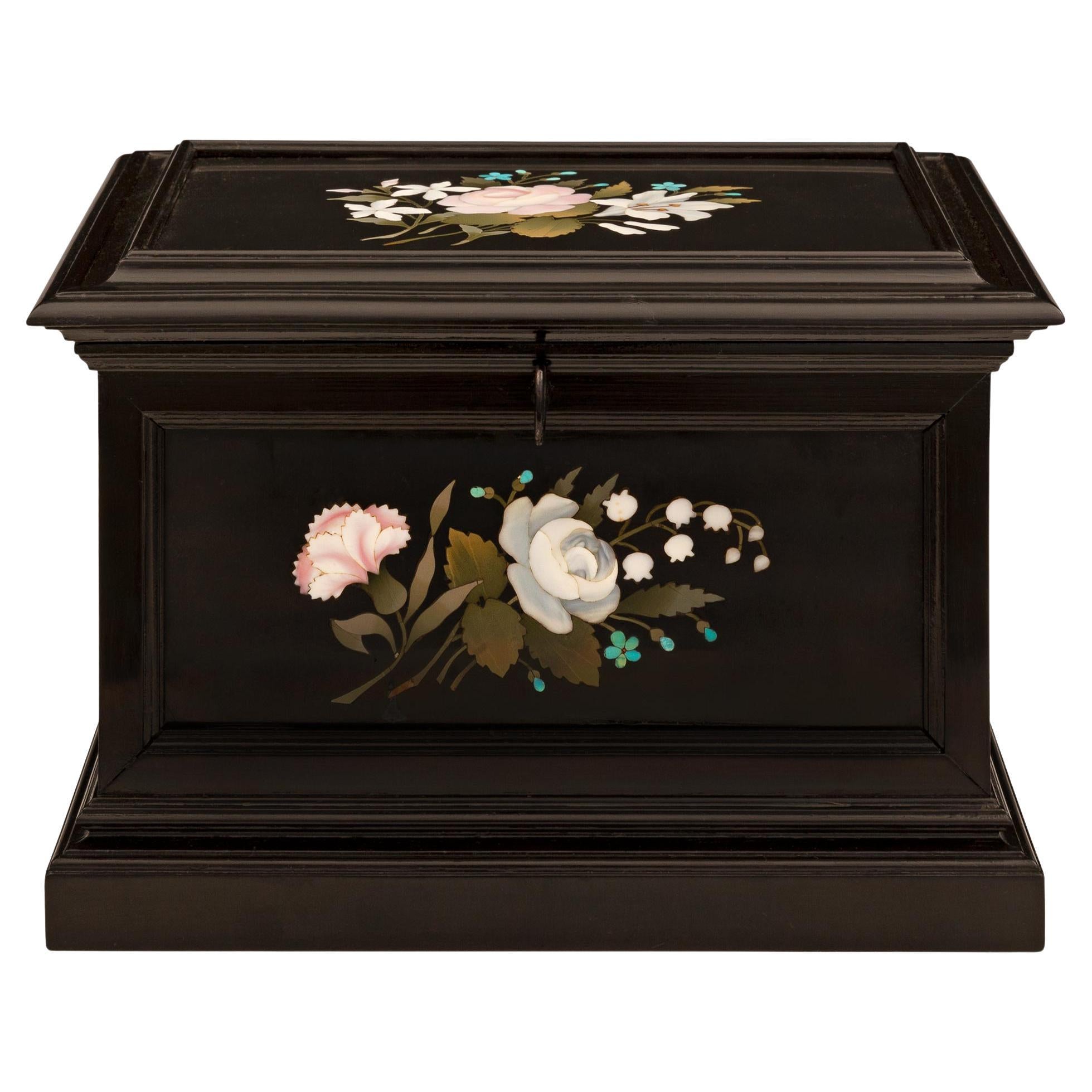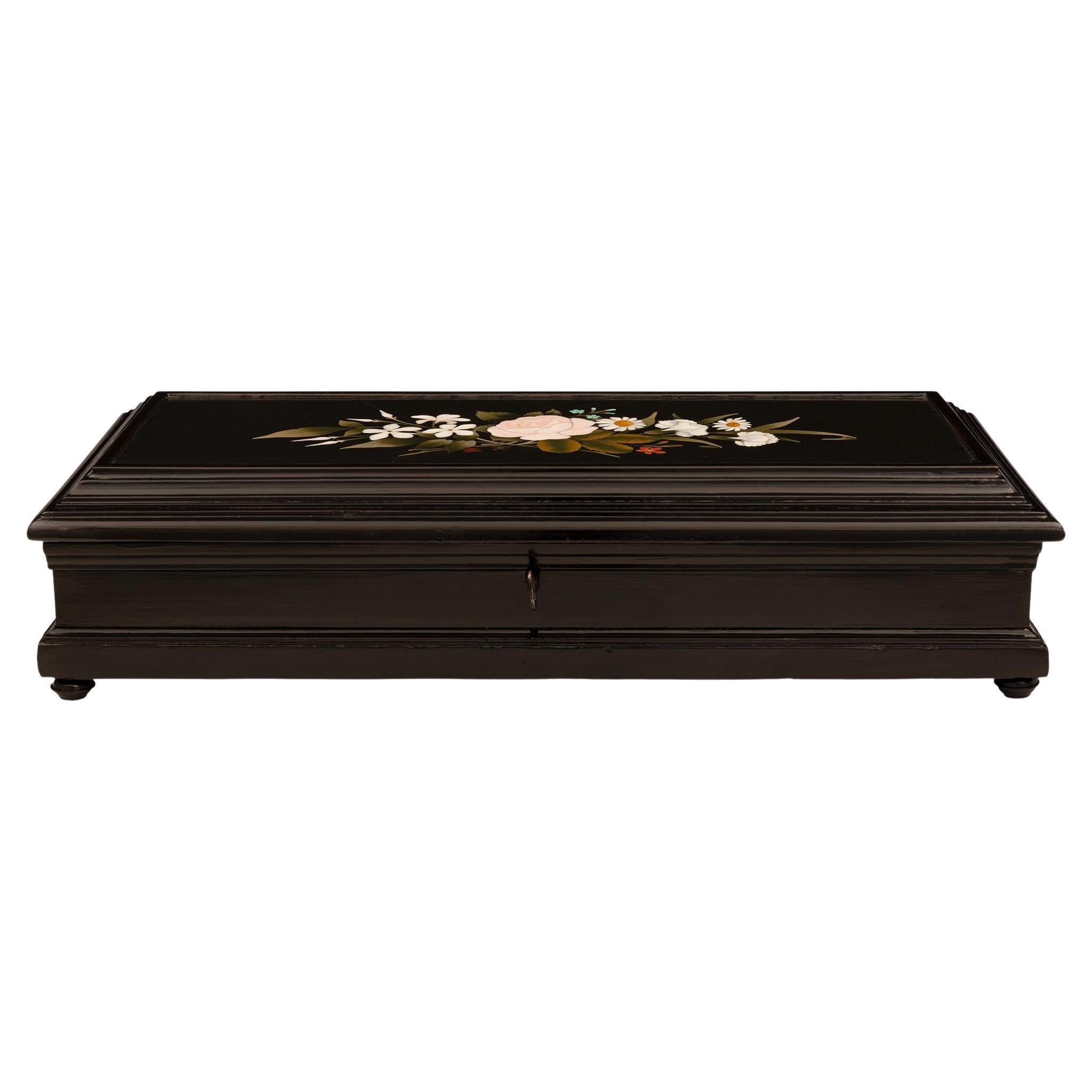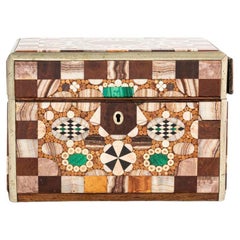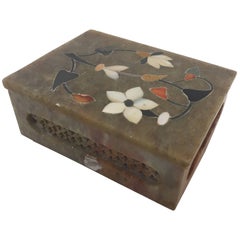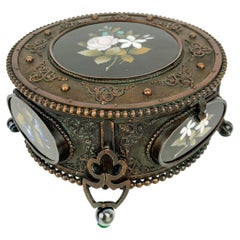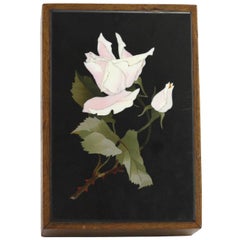
Pietra Dura Jewelry Box
View Similar Items
1 of 4
Pietra Dura Jewelry Box
About the Item
- Dimensions:Height: 2.76 in (7 cm)Width: 7.88 in (20 cm)Depth: 5.32 in (13.5 cm)
- Style:Art Deco (Of the Period)
- Materials and Techniques:
- Place of Origin:
- Period:
- Date of Manufacture:circa 1920
- Condition:Wear consistent with age and use.
- Seller Location:Brisbane, AU
- Reference Number:1stDibs: LU124428502423
You May Also Like
- Pietra Dura Marble Specimen Casket BoxLocated in New York, NYMarble and hardstone specimen casket box or humidor with elaborate pietra dura design.Category
20th Century Decorative Boxes
MaterialsStone, Marble
Sold$1,450 - Anglo-Raj Marble Inlay Box Pietra Dura CensorBy RajhastaniLocated in North Hollywood, CAAnglo Raj inlaid marble pietra dura decorative box with lid. Handmade marble decorative lidded box inlaid with semi precious stones, jasper and carnelian for orange. It is the same craft that you see in the Taj Mahal. Very nice fine pietra dura art...Category
Mid-20th Century Indian Anglo Raj Decorative Boxes
MaterialsMarble
- Patinated Bronze & Pietra Dura Decorative Box, Italy circa 1880Located in Pasadena, CAPatinated Bronze & Pietra Dura Decorative Box, Italy circa 1880 Pietra Dura, called parchin kari or parchinkari (Persian) in the Indian Subcontinent, is a term for the inlay technique of using cut and fitted, highly polished colored stones to create images. It is considered a decorative art. The stonework, after the work is assembled loosely, is glued stone-by-stone to a substrate after having previously been "sliced and cut in different shape sections; and then assembled together so precisely that the contact between each section was practically invisible". Stability was achieved by grooving the undersides of the stones so that they interlocked, rather like a jigsaw puzzle, with everything held tautly in place by an encircling 'frame'. Many different colored stones, particularly marbles, were used, along with semiprecious, and even precious stones. It first appeared in Rome in the 16th century, reaching its full maturity in Florence. Pietra Dura items are generally crafted on green, white or black marble base stones. Typically, the resulting panel is completely flat, but some examples where the image is in low relief were made, taking the work more into the area of hardstone carving. Pietre dure is an Italian plural meaning "hard rocks" or hardstones; the singular Pietra Dura is also encountered in Italian. In Italian, but not in English, the term embraces all gem engraving and hardstone carving, which is the artistic carving of three-dimensional objects in semi-precious stone, normally from a single piece, for example in Chinese jade. The traditional convention in English has been to use the singular Pietra Dura just to denote multicolored inlay work. However, in recent years there has been a trend to use "pietre dure" as a term for the same thing, but not for all of the techniques it covers, in Italian. But the title of a 2008 exhibition at the Metropolitan Museum of Art, New York, Art of the Royal Court: Treasures in Pietre Dure from the Palaces of Europe, used the full Italian sense of the term, probably because they thought that it had greater brand recognition. The Material on the website speaks of objects such as a vase in lapis lazuli as being examples of "hardstone carving (pietre dure)". The Victoria & Albert Museum in London uses both versions on its website, but uses "Pietra Dura" ("A method of inlaying coloured marbles or semi-precious stones into a stone base, often in geometric or flower patterns.") in its "Glossary", which was evidently not consulted by the author of another page, where the reader is told: "Pietre dure (from the Italian 'hard stone') is made from finely sliced coloured stones, precisely matched, to create a pictorial scene or regular design". The English term "Florentine mosaic" is sometimes also encountered, probably developed by the tourist industry. Giovanni Montelatici (1864–1930) was an Italian Florentine artist whose brilliant work has been distributed across the world by tourists and collectors. It is distinct from mosaic in that the component stones are mostly much larger and cut to a shape suiting their place in the image, not all of roughly equal Size and shape as in mosaic. In Pietra Dura, the stones are not cemented together with grout, and works in Pietra Dura are often portable. Nor should it be confused with micromosaics, a form of mosaic using very small tesserae of the same Size to create images rather than decorative patterns, for Byzantine icons, and later for panels for setting into furniture and the like. For fixed inlay work on walls, ceilings, and pavements that do not meet the definition of mosaic, the better terms are intarsia or, in some specific applications, Cosmatesque. Similarly, for works that use larger pieces of stone or tile, opus sectile may be used. Pietra Dura is essentially stone marquetry. As a high expression of lapidary art...Category
Antique Late 19th Century Italian Decorative Boxes
MaterialsStone, Onyx, Bronze
Unavailable$3,450 - Pietra Dura Green Malachite and White Granit Marble BoxLocated in New York, NYA Pietra Dura green malachite and granite marble stone inlayed decorative or jewelry box, circa 20th century. Box is white granite marble with green malachite and white mother of pea...Category
Mid-20th Century Indian Anglo Raj Jewelry Boxes
MaterialsMalachite, Granite, Marble
- Italian Pietra Dura 'Aces High' Gambling Motif Hardwood Table BoxLocated in West Palm Beach, FLItalian Pietra Dura 'Aces High' Gambling Motif Hardwood Table Box Of rectangular form with lift top lid with interior mirror. The top with inlaid verdigris m...Category
20th Century Italian Victorian Decorative Boxes
MaterialsMarble
- Pietra Dura Geometric Box in the Style of Richard BlowBy Richard BlowLocated in New York, NYFabulous Pietra Dura box created in a cool geometric composition possibly by Richard Blow. Masterfully done and while unmarked it is signed Made in Ita...Category
Vintage 1950s Italian Decorative Boxes
MaterialsStone
